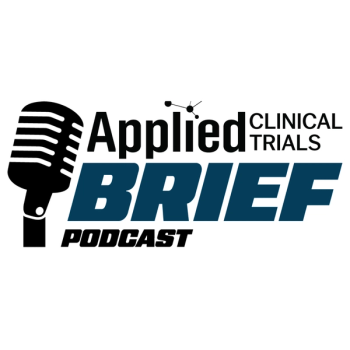APEX 48-week topline findings
- 57% reduction in radiographic progression after placebo patients switched to Tremfya.
- Sustained ACR50 gains from week 24 to week 48 across both Q4W and Q8W dosing schedules.
- ~50% of switch patients reached ACR50 by week 48.
- Durable joint improvements maintained through 48 weeks.
- Safety consistent with Tremfya’s established profile; no new safety signals identified.
Johnson & Johnson has shared new, long-term data from the Phase IIIb APEX clinical trial (NCT04882098) evaluating Tremfya (guselkumab) in active psoriatic arthritis (PsA).1
Long-term data show sustained reduction in PsA symptoms
Results from the study, presented at the Inflammatory Skin Disease Summit (ISDS) 2025, showed that Tremfya continued to reduce both signs and symptoms of active PsA and inhibit progression of structural damage at 48 weeks.
Further data presented show:
- Placebo patients who switched to Tremfya at week 24 saw radiographic progression slow by 57%, with mean PsA-modified van der Heijde-Sharp (vdH-S) score change dropping from 0.96 (weeks 0-24) to 0.41 (weeks 24-48).
- Tremfya produced sustained increases in American College of Rheumatology response criteria (ACR50) responses from week 24 to week 48 in both the every-4-week and every-8-week dosing groups.
- Nearly half of placebo-treated patients who transitioned to Tremfya at week 24 achieved ACR50 by Week 48.
- Improvements in joint outcomes were durable through week 48 across dosing schedules.
- Safety findings aligned with Tremfya’s established profile, with no new safety signals identified.
In a company press release, Christopher Ritchlin, MD, MPH of the University of Rochester Medical Center and APEX study investigator, said: "Psoriatic arthritis is a chronic condition where joint damage can begin early and progress quickly if left untreated. The APEX study results show that guselkumab can inhibit this process, even once it has begun, making it a valuable treatment option for both initiating treatment early and for patients who already show signs of joint damage."
Latest results support sBLA submission
Earlier in July, J&J submitted a supplemental Biologics License Application (sBLA) to the FDA for approval to include new evidence in Tremfya’s label.2
APEX results from the time showed that the study achieved its primary outcome measure of reducing joint symptoms (ACR20), as well as its major secondary measure of inhibited progression of structural damage as measured by change in the modified vdH-S score at week 24, compared to placebo in bio-naïve patients.
In a statement from the sBLA announcement, Brandee Pappalardo, PhD, MPH, vice president, medical affairs, dermatology & rheumatology, Johnson & Johnson Innovative Medicine, said: “Psoriatic arthritis is a complex disease that can lead to severe and irreversible joint damage, which is why we are dedicated to developing innovative therapies that comprehensively address the long-term impact as well as the everyday challenges of this condition. With this new evidence, Tremfya would become the first and only IL-23 inhibitor proven to provide symptom control and to significantly inhibit the progression of joint damage in patients living with active PsA.”
Earlier Tremfya findings demonstrate efficacy at 24 weeks
Additional data of Tremfya in active PsA shared by J&J in June showed:3
- By week 24, patients receiving Tremfya showed significantly less radiographic progression, with mean changes in modified vdH-S scores of 0.55 (Q4W) and 0.54 (Q8W), compared to 1.35 in the placebo group (p=0.002 and p<0.001, respectively).
- ACR20 responses were achieved by 67% of patients in the Q4W group and 68% in the Q8W group, versus 47% in the placebo group (p<0.001).
- ACR50 response rates were 41% for Q4W and 42% for Q8W dosing, compared to 20% for placebo.
APEX trial design
APEX is a multicenter, randomized, double-blind, placebo-controlled study in biologic-naïve patients with active PsA who had inadequate response to prior standard therapies.
- The trial begins with a 24-week double-blind, placebo-controlled treatment period.
- This is followed by a 24-week active-treatment phase for all participants.
- After treatment, patients complete a 12-week safety follow-up period.
- Participants who enter the long-term extension receive an additional 2 years of active treatment before a final safety follow-up.
References
1. New long-term data reinforces TREMFYA® (guselkumab) as the only IL-23 inhibitor proven to substantially inhibit structural joint damage in active psoriatic arthritis. News release. Johnson & Johnson. November 17, 2025. Accessed November 17, 2025. https://www.prnewswire.com/news-releases/new-long-term-data-reinforces-tremfya-guselkumab-as-the-only-il-23-inhibitor-proven-to-substantially-inhibit-structural-joint-damage-in-active-psoriatic-arthritis-302616074.html
2. J&J Submits sBLA to FDA for Tremfya Label Expansion Based on PsA Joint Damage Inhibition Data. Applied Clinical Trials. July 29, 2025. Accessed November 17, 2025. https://www.appliedclinicaltrialsonline.com/view/sbla-fda-tremfya-label-expansion-psa-joint-damage-inhibition-data
3. Phase IIIb APEX Trial Finds Tremfya Significantly Slows Joint Damage Progression in Psoriatic Arthritis. Applied Clinical Trials. June 11, 2025. Accessed November 17, 2025. https://www.appliedclinicaltrialsonline.com/view/apex-trial-tremfya-joint-damage-psoriatic-arthritis







.png)



.png)



.png)
.png)
